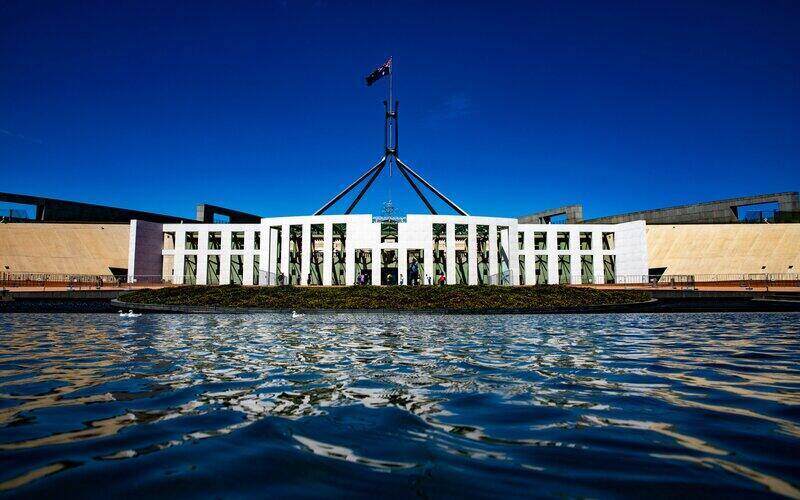UPDATE: The federal government could officially abandon plans to remove the 37 cent tax bracket as part of the stage three tax cuts as early as Thursday, according to reports.
The expected changes were reportedly proposed by Prime Minister Anthony Albanese at a cabinet meeting on Tuesday.
The lower end of the 37-cent-per-dollar bracket, which currently encompasses annual incomes of between $120,001 and $180,000, is expected to be increased to $135,000.
It was previously promised to be scrapped all together, replaced with a single 30-cent-per-dollar tax band encompassing income of $45,000 to $200,000.
The top end, meanwhile, is tipped to be increased to $190,000 - revised down from $200,000, with any further earnings to be taxed at a rate of 45 cents per dollar.
Meanwhile, reports have emerged that taxable income of up to $45,000 will soon face a rate of 16 cents per dollar, down from the current rate of 19 cents per dollar, while the tax free threshold might be bumped from $18,200 to $19,000.
The rumoured changes would see the saving promised to a person earning a pre-tax income of $190,000 reduced from around $7,575 to approximately $4,655 annually.
The Low Income Tax Offset (LITO) could also get a boost, with speculation is could increase for those earning up to $50,000 a year.
If the rumours are to be believed, that could add $850 to peoples’ bottom lines – $150 more than the top line of the offset current offers.
“You could argue that [the supposed changes] make it fairer, in the sense that the tax cuts would be spread across the income range to a greater degree,” Shane Oliver, AMP head of investment strategy and economics and chief economist, told Savings.com.au.
“The counter argument is that the cuts are part of an overall three stage tax reform, wherein the initial phases were allocated to low and middle income earners, [and] the impact of bracket creep on high income earners is still significant.”
Mr Albanese is said to be planning to announce the raft of changes to the stage three tax cuts at the National Press Club tomorrow following today’s caucus meeting.
Deputy Opposition Leader Sussan Ley appears to have vowed to repeal any amendments to the stage three tax cuts if the Opposition wins power in the next election.
"There's no way in the world that we are going to back in higher taxes and an attack on aspirational Australians," she told Sky News.
Previously anticipated changes included scrapping the plan to increase the highest tax bracket to $200,000, keeping it at $180,000, 2GB reported on Monday.
That would have seen those earning $200,000 paying around $6,000 less tax in financial year 2024-25 than they did the year prior, as opposed to the $9,000 saving promised.
The resulting savings realised by the government were expected to be funnelled into upping the tax free threshold.
“It seems like a no brainer,” H&R Block director of tax communications Mark Chapman told Savings.com.au on Tuesday.
“Obviously there are risks, in terms of stoking inflation and keeping interest rates high, but it would, nevertheless, really help with the cost of living crisis.”
Dr Oliver noted that, if implemented, the reported changes could draw the eye of the Reserve Bank of Australia (RBA) board.
“There is a risk that the changes to the stage three tax cuts could result in more spending in the economy than would otherwise have occurred, resulting in an inflationary impact, which could keep interest rates higher for longer,” he said.
The original three-part tax refresh was set to reshape nearly all the tax brackets, as per the chart below.
Appearing on KIIS FM earlier this week, Mr Albanese neither confirmed nor denied the reports, instead saying he broadly supports tax cuts.
Paying closer attention to his comments, however, it appears the Prime Minister may have hinted at there being truth to the rumours.
“Everyone will be getting a tax cut,” he said.
Under the original plan, those earning under $45,000 wouldn’t be impacted by the final stage of the taxation update, with many having benefited from stage one and two of the cuts.
“What we're doing is looking at how we can help lower income earners," the Prime Minister said.
“Middle Australia, particularly, is doing it really tough … so we’re looking at ways in which we can provide assistance to them.”
The tax free threshold is currently $18,200, as it has been for more than a decade.
Australians earning less than that don’t pay tax on their income, and if it had been indexed to inflation at that time, it would be nearly $23,000.
Economist Chris Richardson suggested that, by leaving the top tax tier at $180,000, the government could realise a saving of around $3.4 billion in financial year 2025-26.
If the funds saved were directed towards increasing the tax free threshold, the lowest tax band could theoretically increase to $19,500, he wrote on X (formerly Twitter).
Such a change was said to have the potential to save every Australian earning $19,500 or more nearly $250 a year.
“It is certainly time for the tax free threshold to be lifted,” Mr Chapman said.
“Whether that's to $19,500, or some other figure, is obviously up to the Prime Minister, but any increase will be justified.”
Mr Chapman noted the wealthiest Australians would disproportionately benefit from the original stage three tax cuts.
That could prove hard to justify in the current cost of living crisis.
The reported changes have been met with anger from the Opposition.
Shadow Treasurer Angus Taylor slammed the rumoured move, noting Australians have twice voted to elect a government in support of the legislated stage three tax cuts.
“Any change to the legislated tax cuts is an absolute betrayal of the trust Australians have placed in this government,” Mr Taylor said.
“If the Prime Minister is going to break this promise, he needs to front up and be honest with the Australian people rather than relying on whispers through the media.”
Over the weekend, Mr Albanese called for Labor MPs to return to Canberra to take part in a caucus meeting discussing the cost-of-living crisis.
The challenge awaiting them will likely be finding balance between easing the financial strain on households and keeping inflation under thumb.
Meanwhile, questions on whether Australia relies too heavily on income tax continue to swirl.
“We do need a wholesale tax reform in Australia, rather than piecemeal tweaks,” Dr Oliver said.
“That would involve greater reliance on the GST, lowering the tax brackets across the board for everybody, lowering the corporate tax rate marginally, fixing up silly taxes like stamp duty, and reducing the generosity of the capital gains tax discount.
“We also need to make sure we compensate low income earners and people on welfare for any increase in GST, because GST affects low income earners more than high income earners because they consume more.”
Tax changes to have the same effect as two rate cuts: ANZ
Economists at ANZ have theorised that the third stage of the tax cuts could have the same economic impact as if the Reserve Bank of Australia (RBA) were to slash the cash rate by 50 basis points (bringing it down to 3.85%).
“In our assessment they add around 0.4% to GDP growth over the year to the June quarter 2025 and are roughly equivalent to two 25 basis point rate cuts,” ANZ head of Australian economics Adam Boyton said.
The bank has already factored the impact of the cuts into its cash rate forecasts.
It believes the cash rate likely peaked at 4.35% in November, with cuts anticipated to begin in late 2024.
The big four bank noted that the size of the tax cuts will likely dwarf their impact on growth, largely because people could choose to save the money they would have otherwise lost to taxation.
That’s particularly likely to be the case among higher income earners, a sentiment Mr Chapman agrees with.
"If lower income earners get a tax cut, they'll actually go out and spend it in the economy," he said.
"Therefore, all Australian businesses will benefit.
"Whereas wealthier people, if they get a tax cut, chances are they will simply save it.
"So, therefore, their tax cut would be to a large extent wasted."
While any increased spending can have flow-on effects to inflation, ANZ believes the tax cut’s short term impact will be limited.
“While the increase in GDP growth should technically add to inflation … the limited impact on employment and hence also wages points to only marginally higher inflation relative to the counterfactual,” Mr Boyton said.
First published on January 2024
Image by Marcus Reubenstein on Unsplash.



 Denise Raward
Denise Raward
 Harry O'Sullivan
Harry O'Sullivan

 Emma Duffy
Emma Duffy


